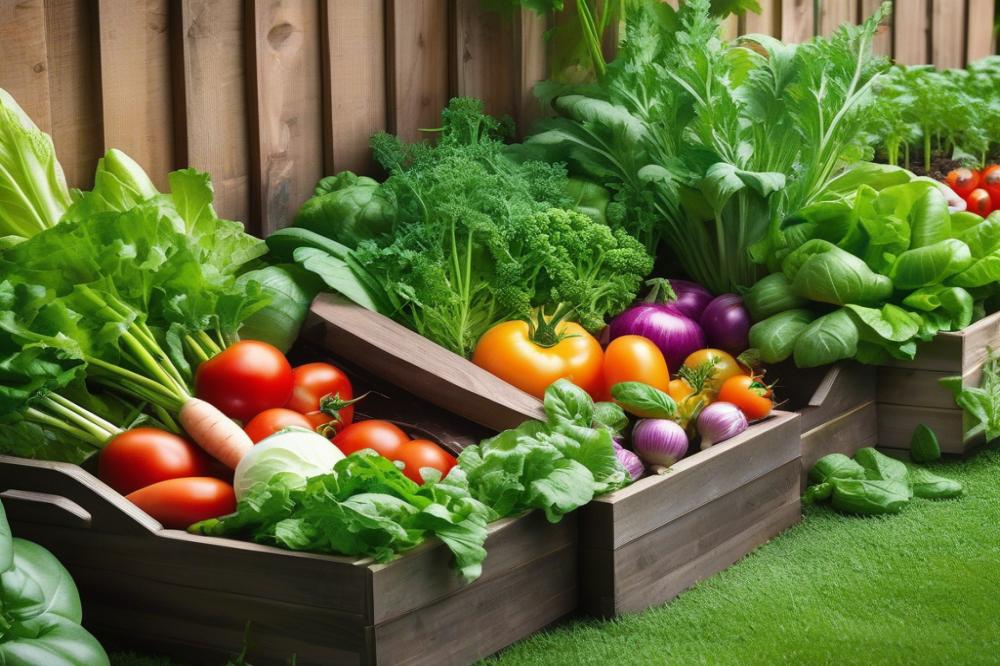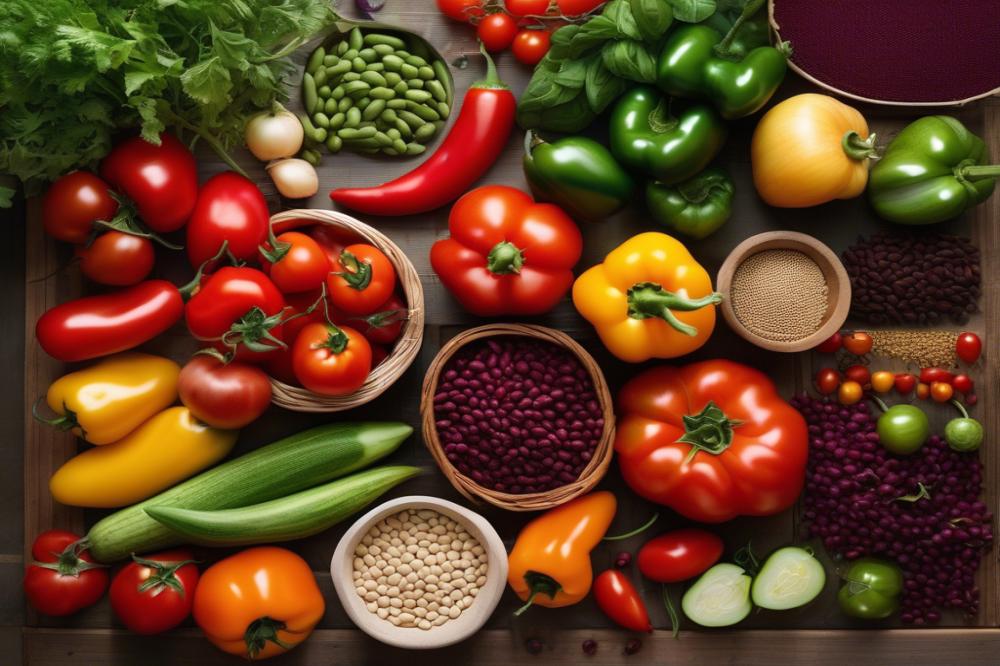Introduction
German tomatoes have gained a reputation for their delightful flavors and rich history. These heirloom varieties are beloved by gardeners who cherish the unique tastes and textures they offer. Heirloom gardening celebrates the preservation of distinct plant varieties that have been passed down through generations. Growing these prized tomatoes not only enriches our gardens but also connects us to our agricultural past.
Choosing organic methods for growing tomatoes is crucial for ensuring a successful and fruitful harvest. Organic gardening emphasizes the use of natural processes and materials. By avoiding synthetic fertilizers and pesticides, gardeners can promote a healthier ecosystem. This approach encourages the production of sweet and juicy tomatoes, making the effort truly worthwhile.
Healthy soil is the foundation for any thriving garden. Proper soil preparation creates a fertile environment for your plants to flourish. When cultivating heirloom varieties, consider the importance of companion planting. This practice helps control pests and diseases, such as early blight, while enhancing growth. Tomato care involves understanding the needs of your plants, from watering to providing support as they grow.
When the harvest time comes, the fruits of your labor become a testament to the care and attention you’ve given. These sweet tomatoes can become a centerpiece for any meal. Celebrating the flavors of your homegrown crop can foster a deeper appreciation for organic gardening and sustainable practices. Overall, nurturing your garden with patience and knowledge will yield a bountiful tomato harvest.
Understanding German tomatoes


German tomatoes are known for their rich flavor and delightful sweetness. These plants produce fruits that are juicy and vibrant. Their unique taste makes them a favorite among many gardeners and chefs alike. When selecting varieties of tomatoes, one can choose between heirloom varieties and hybrid types. Each group possesses distinctive traits that can influence gardening outcomes.
Heirloom varieties stand out for their long-standing history and genetic diversity. These tomatoes, passed down through generations, often showcase diverse colors and shapes. They offer flavors that are deep and complex, something many modern hybrids may lack. Hybrid tomatoes, on the other hand, are bred for specific traits, such as disease resistance and uniformity. These typically grow quicker and produce higher yields, yet may not provide the same rich taste.
Gardening enthusiasts often turn to heirloom tomatoes for several reasons. Flavor is the most significant benefit, as these plants yield sweet tomatoes unlike any supermarket variety. Gardeners also appreciate the chance to save seeds for future planting. This practice promotes an organic gardening approach, allowing for sustainable farming methods. Soil preparation is essential in ensuring healthy plants, and heirloom varieties tend to thrive with proper care.
Another advantage includes easier adaptability of heirloom plants to local growing conditions. When grown with the right tomato care techniques, even beginners can enjoy a successful tomato harvest. Companion planting can benefit these tomatoes as well. For instance, planting basil nearby may enhance the flavor of heirloom tomatoes and possibly deter pests. However, gardeners should be aware of potential threats like early blight. Monitoring plants and providing adequate moisture can help mitigate this issue.
Cultivating these tomatoes can lead to memorable meals and joyful gardening experiences. Those who value both flavor and tradition often find heirloom varieties to be an ideal choice. Sweet and juicy tomatoes can elevate any dish, making the gardening journey worthwhile.
Soil Preparation


Preparing the soil is a vital step for growing sweet and juicy tomatoes. Rich, well-draining soil provides the foundation for healthy plants. Before planting, it’s important to assess the quality of the existing soil. An excellent garden requires more than just any dirt; nutrients and structure play a crucial role.
Start by testing the pH level of the soil. Tomatoes thrive best in a slightly acidic environment with a pH between 6.0 and 6.8. Soil test kits available at garden centers make this task easy. Based on the results, you may need to adjust the acidity. Adding lime raises the pH, while sulfur can lower it. Knowledge about your soil helps direct any future amendments.
Incorporating organic compost is one of the best gardening tips. Organic matter enriches the soil with nutrients and improves its structure. Peat moss, aged manure, or leaf mold also work well for enhancing soil quality. Spread a layer of compost over the garden bed and till it in a few weeks before planting. This method helps to create a fertile environment for heirloom varieties.
Additional nutrients can boost growth. Balanced fertilizers containing nitrogen, phosphorus, and potassium are excellent for young plants. Additionally, consider side dressing with a slow-release fertilizer during the growing season. Regular nutrient supply promotes robust tomato care and can lead to a bountiful tomato harvest.
Companion planting can also impact soil health. Planting basil or marigolds alongside tomatoes can deter pests and enhance growth. These neighbors offer a natural way to protect against early blight and other common tomato diseases, further helping your plants thrive.
After preparing, maintain good watering practices for the best results. Water the soil deeply but infrequently to encourage deep root growth. Mulching around the plants can help retain moisture and regulate soil temperature. This simple technique prevents weeds from competing for nutrients, keeping your tomatoes strong.
Tomato Care


Nurturing German tomatoes requires attention and dedication. Start with proper soil preparation. Enrich the soil with compost before planting. This organic matter helps create a nutrient-rich environment for your seedlings.
Watering is crucial in the early stages. Use deep watering techniques to encourage strong root growth. Aim for the base of the plant to keep leaves dry. Sweet tomatoes thrive with consistent moisture, but avoid over-watering, which can lead to problems.
Fertilizing can really boost fruit production. Choose a balanced fertilizer suited for heirloom varieties. During the growing season, provide additional nutrients every few weeks. This will promote the development of juicy tomatoes.
Regular pruning is another essential gardening tip. Trim off any suckers that grow in the leaf axils. This practice redirects energy to the main stems and fruit. It can also improve air circulation around the plant.
Companion planting is beneficial. Planting herbs like basil nearby can help ward off pests. This method encourages a healthier growing environment and can enhance the flavor of tomatoes.
Keeping an eye out for disease is essential. Early blight is a common issue among tomato plants. Signs include yellowing leaves and dark spots. Remove affected leaves immediately to prevent further spread.
Avoid overcrowding plants to reduce disease risk. Allowing enough space helps with air circulation. Healthy plants grow better and produce larger tomato harvests.
Monitor the plants regularly for other common issues. Pests like aphids and spider mites can invade your garden. Use organic gardening methods to control these problems without harsh chemicals.
Understanding these basic care tips is foundational to growing healthy tomatoes. Each step contributes to producing sweet and juicy fruits. An attentive gardener’s efforts will surely reward them with plentiful harvests.
Companion Planting
Companion planting can play a significant role in growing sweet and juicy tomatoes. This gardening method involves placing certain plants close together to promote each other’s growth. Benefits include improved flavor, enhanced growth, and natural pest control. When done correctly, it becomes a valuable technique for organic gardening.
Some of the best companion plants for heirloom varieties include basil, marigolds, and garlic. Basil is known to improve the flavor of tomatoes. It also attracts beneficial insects, which help control pests. Marigolds serve as a natural pest repellent, deterring nematodes and other harmful insects. Garlic can ward off aphids and other pests that threaten tomato plants.
Adding these plants to your garden can provide mutual benefits. Early blight is a common issue with tomatoes, but companion plants help create a healthier environment. Marigolds and basil can decrease disease risk by promoting better air circulation and preventing pathogens. They offer protection without the need for harsh chemicals.
Proper soil preparation is also crucial for a thriving garden. Mix in compost to improve soil quality before planting. Doing this supports the growth of both tomatoes and their companions. Consider planting carrots and onions nearby, as they can deter pests while improving soil health. This level of diversity encourages a balanced ecosystem.
Incorporating companion planting into your gardening tips can lead to a more fruitful tomato harvest. You might also find that the flavors of your produce are enhanced by the presence of these compatible plants. Organic gardening practices thrive on such collaborative efforts. By helping each other grow, plants can create a vibrant community in your backyard.
Harvesting German Tomatoes
Timing the harvest is crucial for juicy tomatoes. Generally, they will reach their peak ripeness between 70 to 90 days after planting. Look for vibrant colors, which indicate sweetness. When the fruit feels firm yet slightly soft to the touch, it’s ready to be picked. Another sign is when the tomatoes easily detach from the vine with a gentle twist.
Best practices for picking heirloom varieties involve using garden shears or scissors. This method minimizes damage to the plants. Aim to harvest when temperatures are cooler, either in the early morning or late evening. During these times, the fruits are less stressed. Wearing gloves can help protect your hands and the delicate skin of the tomatoes.
Storing ripe tomatoes is straightforward. Place them in a single layer at room temperature to preserve flavor and texture. Avoid refrigeration for as long as possible. Cold temperatures can diminish the sweetness and create mealy fruit. Some gardeners choose to place tomatoes stem-side up, which can prolong their freshness.
To prolong the tomato harvest, consider companion planting. Herbs like basil and marigold can improve growth and deter pests. Always check for signs of early blight; prevention is easier then treatment. Regularly removing dead leaves enhances air circulation, further protecting plants. Maintain diligent soil preparation as well, with rich organic matter to nourish the roots.
Maximizing yield starts with consistent tomato care. Regular watering is essential, aiming for deep, thorough irrigation without waterlogging the soil. Staking or caging plants helps support fruit development and reduces the risk of rot. Keep an eye out for pests, using organic gardening techniques to manage any infestations without chemicals.
Identifying when to harvest heirloom tomatoes is a blend of art and science. It’s a rewarding experience that leads to sweet, juicy harvests. Enjoy your gardening journey, and remember that each season brings new challenges and joys.
Final Thoughts on Growing Heirloom Tomatoes
Growing heirloom tomatoes offers a remarkable journey into the world of organic gardening. Throughout this article, we have highlighted essential steps to cultivate these delightful plants for a sweet harvest. Start by selecting a sunny spot in your garden. Remember that these plants thrive on warmth and light, which is crucial for their development.
Soil quality plays an important role, too. Enriching your earth with compost will provide the nutrients necessary for producing juicy tomatoes. Techniques like crop rotation and companion planting can also keep your garden healthy and vibrant. Don’t forget the power of water. Regular watering helps maintain moisture and fosters the growth of plump, flavorful fruit.
Finally, embrace the beauty of heirloom gardening. The rewards are not just in the bounty you will reap but also in the connection you build with nature. These plants often provide unique varieties, each boasting its own character and taste. They can transform your meals and bring joy to family gatherings.
Share your experiences and tips with others in the gardening community. Engaging with fellow gardeners creates a space for learning and inspiration. As you cultivate these delicious plants, rejoice in the flavors and stories they bring to your table. Happy gardening!



